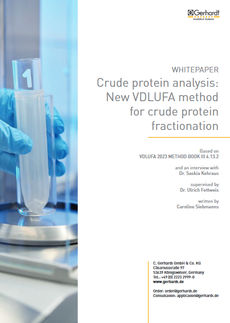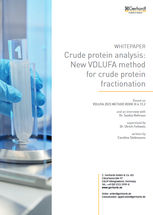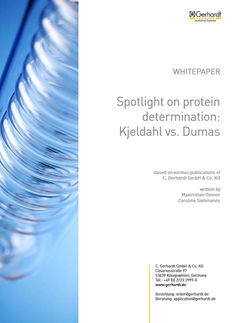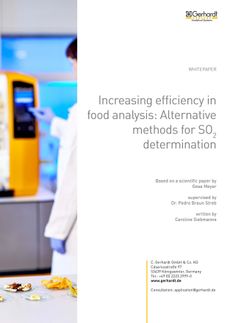Crude protein fractionation in animal feed according to VDLUFA

Fractionation of crude protein to provide a basis for crude protein evaluation in feed analyses
Crude protein fractionation in animal feed according to VDLUFA is an important method for the differentiated evaluation of crude protein content that goes beyond the classic Weender analysis. The aim is to determine the usability and digestibility of proteins more precisely in order to calculate feed rations for livestock efficiently and in line with requirements. The basis is the chemical separation of the total crude protein (XP) into different fractions (A to C) based on their solubility, e.g. by treatment with tungstate solution, borate-phosphate buffer or detergents. These fractions provide information on the digestibility of proteins - from rapidly available non-protein nitrogen (A) to indigestible cell wall protein (C). The method is based on the VDLUFA method book and is used, for example, in the CNCPS model for ration calculation. Farmers benefit from cost-efficient feed utilisation, improved animal health and reduced environmental impact.
Download white paper now

Crude protein fractionation in animal feed according to VDLUFA
Fractionation of crude protein to provide a basis for crude protein evaluation in feed analyses
Advertisement
White Paper classification
White papers on related topics
Products on related topics
Manufacturers of similar products
See the theme worlds for related content
Topic world Digestion
Sample digestion is a critical step in chemical analysis that often determines the success or failure of an investigation. It involves the targeted transformation and preparation of a sample to make the components of interest accessible for analysis. Various methods such as thermal, chemical or enzymatic digestion are used to dissolve matrix components, remove unwanted components and release target substances.

Topic world Digestion
Sample digestion is a critical step in chemical analysis that often determines the success or failure of an investigation. It involves the targeted transformation and preparation of a sample to make the components of interest accessible for analysis. Various methods such as thermal, chemical or enzymatic digestion are used to dissolve matrix components, remove unwanted components and release target substances.






